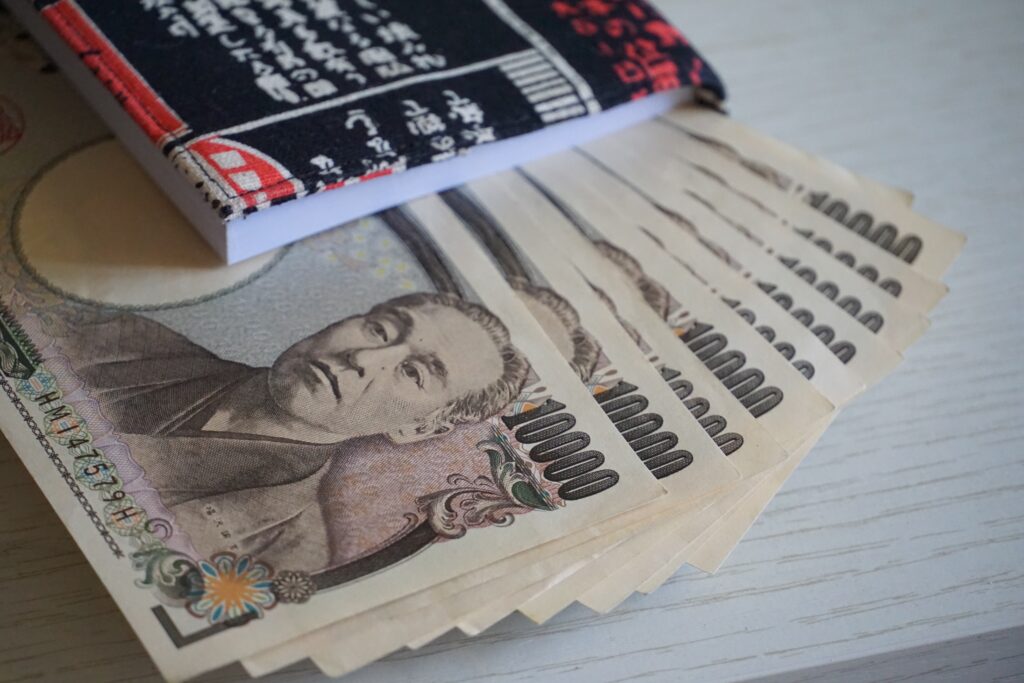

19.09.2022 – The yen continues to weaken unchecked. Which is due to the negative interest rate – Japan is the lone proponent of the ongoing flood of money. The question of all questions for the yen: Will the Bank of Japan change course or not?
How low can you go? The yen weakens unchecked, USDJPY runs up as if on rails. See our daily chart with the 50-day line. The yen has just marked its weakest level against the dollar in over two decades. Since 1998, to be exact.

Source: Bernstein Bank GmbH
No wonder: while the U.S. Federal Reserve is spiritedly implementing its interest rate turnaround, the Bank of Japan has kept its key rate at minus 0.1 percent since 2016. The Japanese central bank has instead opted to freeze the yield on ten-year Japan Bonds at around 0.25 percent. We are curious to see how the Bank of Japan positions itself at its next interest rate decision on September 22.
Tentative verbal intervention
The market has just taken notice. That’s because Hirokazu Matsuno, Japan’s top cabinet secretary, stated that the government is prepared to make any decision possible to stabilize the Japanese yen. The market has so far been unimpressed by the announcements and quickly shrugged off the verbal intervention.
Possible capital repatriation
But for the financial blog “ZeroHedge”, the current upward trend will soon be history. Japan is a net capital exporter, wants domestic investors increasingly invested abroad. Domestic investors had bought many foreign assets, international investors had held back in Japan. In addition, rising energy prices were causing an outflow of capital. In normal times, the weak yen would boost exports. However, imports had recently outweighed exports. Furthermore, tourism had slumped in the wake of Corona. Which could change now, however. We add: The same applies to exports – if the import situation stabilizes together with Corona in the rest of the world, cheap and high-quality Japanese goods could be in demand. Home electronics, cars, whatever.
The catapult
Thus, the yen could become a catapult, “ZeroHedge” continued. Any domestic crisis could immediately cause money to be repatriated. And with a net international investment position of the equivalent of $3.5 trillion, that would lead to a violent yen rally. To which we wonder what crisis that might be.
No inflation to speak of
Our countervailing view: Until the decades-long slump in Japanese productivity is eliminated, interest rates in Japan are unlikely to rise. This is because higher interest rates would weaken borrowing and slow economic performance. Furthermore, Japanese have no problem cutting back in times of rising inflation. Especially since the inflation rate on the Nippon is only 2.6 percent anyway. Therefore, things could well get worse for USDJPY from the bulls’ point of view: In the early 1970s, the yen stood at around 350 to the dollar.
Jesper Koll, a director at investment boutique Monex Group, also sees the yen heading for 150 to 160. Koll, speaking to CNBC a few days ago, saw two powerful forces at work: the widening of the interest rate differential with the U.S. and Japan’s current account deficit. The development of the currency is textbook and predictably based on fundamentals.
Again, it remains to be said that the Japanese central bank could surprise the stock market. Shorties could then be caught on the wrong foot. On the other hand, the expected turnaround could take forever. We hope that you are right in weighing the arguments. Bernstein Bank is keeping an eye on the situation for you!
The content of this publication is for general information purposes only. In this context, it is neither an individual investment recommendation or advice nor an offer to purchase or sell securities or other financial products. The content in question and all the information contained therein do not in any way replace individual investor- or investment-oriented advice. No reliable forecast or indication for the future is possible with respect to any presentation or information on the present or past performance of the relevant underlying assets. All information and data presented in this publication are based on reliable sources. However, Bernstein Bank does not guarantee that the information and data contained in this publication is up-to-date, correct and complete. Securities traded on the financial markets are subject to price fluctuations. A contract for difference (CFD) is also a financial instrument with leverage effect. Against this backdrop, CFD trading involves a high risk up to the point of total loss and may not be suitable for all investors. Therefore, make sure that you have fully understood all the correlating risks. If necessary, ask for independent advice. CFDs are complex instruments and are associated with the high risk of losing money quickly because of the leverage effect. 68% of retail investor accounts lose money trading CFD with this provider. You should consider whether you understand how CFD work and whether you can afford to take the high risk of losing your money.7
